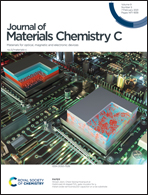Synthesis and optical nonlinearity investigation of novel Fe3O4@Ti3C2 MXene hybrid nanomaterials from 1 to 2 μm
Abstract
In the present work, we synthesize an Fe3O4@Ti3C2 MXene hybrid nanomaterial. Comprehensive investigation on the morphology and structure of the prepared Fe3O4@Ti3C2 MXene demonstrates the strong interaction between Ti3C2 MXene and Fe3O4 nanoparticles. The open-aperture Z-scan technology is utilized to study the nonlinear absorption features of the Fe3O4@Ti3C2 MXene nanocomposite from 1 to 2 μm, showing a large modulation depth and a relatively low saturable intensity. The nonlinear absorption properties make the prepared Fe3O4@Ti3C2 MXene hybrid nanomaterial a potential photonic device for optical pulse generation. As a consequence, passively Q-switched bulk lasers based on the prepared Fe3O4@Ti3C2 MXene nanomaterial saturable absorber are demonstrated in the operation band of 1–2 μm for the first time, producing the shortest pulse duration of 119 ns. The corresponding highest pulse energy and the maximum pulse energy are 0.6 μJ and 2.3 W, respectively. Our results confirm that the Fe3O4@Ti3C2 MXene hybrid nanomaterial we synthesized possesses a large optical nonlinearity, which could be a candidate for optical pulse generation in a wide operating band from 1 to 2 μm.



 Please wait while we load your content...
Please wait while we load your content...